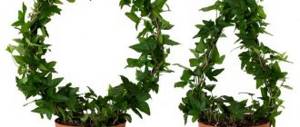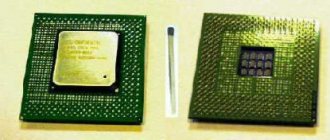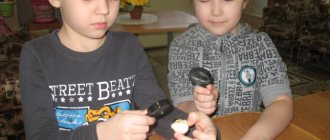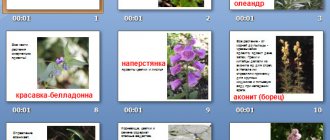Flowering plants 900igr.ne t. Root Stem Trunk Leaf FlowerFruitsFruits and seeds. - presentation
Flowering plants 900igr.ne t
Root Stem Trunk Leaf FlowerFruitFruits and seeds
Morphological analysis of the plant 1. Life form of the plant ____________________________________________________________ 2. Root (type of root system) ____________________________________________________________ 3. Position of the shoot in space ____________________________________________________________ 4. Leaf (leaf structure). Leaf arrangement on the stem __________ Leaf simple or complex Attachment of the leaf to the stem __________ Shape of the leaf blade _____________ Form of division of the leaf blade__ Shape of the crown of the leaf____________ Shape of the leaf venation _______________ Shape of the base of the leaf ________________ Shape of the edge of the leaf blade _________ 5.Flower (regular, irregular)___________________________________________ 6.Inflorescences On legs (tassel, panicle, scutellum) Sessile (simple spike, compound spike, cob, head, basket) Short axis (complex umbel, simple umbel) Long axis 7. Types of fruits. Dry – achene, grain, bean, pod, capsule, nut Juicy – berry, drupe, apple, pumpkin, cucumber Single-seeded, multi-seeded.
“Description of a plant phenotype” Practical work “Description of a plant phenotype” Goal: * be able to describe plant phenotypes using morphological characteristics; * strengthen computer skills. Equipment: indoor plants or herbariums Work progress 1. Examine with a magnifying glass parts of the plant herbarium offered to you 2. Find in the presentation “Flowering Plants” (Appendix 1) a description of the morphological characteristics using the proposed plan 3. Write the results in the table * Life form of the plant (slide 5)5 *Root system (slide 6)6 *Stem (slide 8)8 *Leaf (slides 10,11,12,13,14,15) *Flower (slides 16, 18)1618 *Fruit (slide 19)19 *Modification of the root, stem, leaves (slide 20)20 4. Draw a conclusion
Bulb - an underground shoot, succulent modified leaves Definition of the life form of plants Tree Tree - plants that can reach a height of more than 6 m and have one clearly defined trunk. trunk Shrub Shrub Shrub – below 6 m and have several thin trunks. Herbs Herbs are plants with succulent, green shoots that never completely woody. Rhizome is an underground shoot that performs the function of deposition of reserve substances and renewal. Has no leaves. Stolon is a modified underground shoot on which the tuber develops Stolon Bulb
Root Root is the main vegetative organ of higher plants Root systems tap stem main root lateral adventitious fibrous Main root develops from the root of the embryo Adventitious roots grow from the stem Lateral roots - from the main and adventitious ones Characteristic of dicotyledonous plants (dandelion, carrot) The main root does not stand out among the adventitious ones Characteristic for monocotyledonous plants (wheat, onion)
A shoot is a complex organ consisting of a stem, leaves and buds. Structure of the shoot. Apical bud. Stem. Internode. Axillary bud. Leaf axil. Leaf. Bud ring.
StemStem is part of a shoot Types of stems by shape and position in space Straight or upright erect Oblique Curved Arc-shaped Ascending Drooping Articulate-ascending Fractured Twisting Intertwining Climbing Climbing Climbing Hanging Creeping Creeping, rooting in nodes Immersed in the water column Floating Pop-up
Leaf Apex Edge Leaf base Petiole Stipule Leaf axil Leaf blade Vaginal leaf
Identification of leaves Leaf arrangement Attachment to the stem Alternate whorled with petiole sessile (without petiole) Opposite Alternate whorled sessile (without petiole) Opposite with petiole Ornate whorled sessile (without petiole) Opposite
SimpleComplex Definition of leaves Rounded Heart-shaped Oval Linear Lanceolate Palmate lobed Palmate Unpaired Pinnately compound Palmate compound Paripinnate compound Venation Reticulate Parallel Arc
According to the shape of the apex Blunt Sharp Pointed Acute palmate palmately divided pinnately pinnate Forms of a simple leaf According to the division of the leaf blade dissected lobed whole
According to venation or nervation According to the shape of the base According to the shape of the leaf blade pinnate nerve digital nerve arcuate nerve parallel wedge-shaped round heart-shaped arrow-shaped spear-shaped broadly ovoid lanceolate linear ovoid
According to the shape of the leaf blade: round oval oblong xiphoid obverse-broad-ovate obovate obovate oblanceolate
SerrateDouble-serrateToothedEmarcate CrenatePricklytoothedTinuousEntire edge Shape of the edge of the leaf blade
Identification of inflorescences Long axis On legs Sessile Raceme Panicle Scutellum Short axis Simple umbelComplex umbrella Simple earEar complexEarheadHeadBasket
Flower structure Stigma Column Anther Stamen filament Petal Ovary Sepal Receptacle Pedicel Pistil Stamen Corolla Flower A flower is a modified, shortened shoot in which sex cells (gametes) are formed and pollination and fertilization occur
Flower correct incorrectFlower Family name Flower formula Rosaceae P 5 L 5 T P P 5 L 5 T P P 5 +5 L 5 T P Cruciferous P 4 L 4 T 2+4 P 1 Solanaceae P (5) L (5) T 5 P (2) Legumes P 5 L 1+2+(2) T (9)+1 P 1 CompositaeH 0 L (5) T (5) P (2) -tubular LiliaceaeO (6) T 6 P 1 CerealsO (2)+2 T 3 P 1 Flower
dry dry single-seeded multi-seeded juicy juicy Definition of fruit capsule pod bean caryopsis achene nut drupe berry apple cucumber
ROOT STALK LEAVES CHANGES IN ROOT STALK LEAVES * Root vegetables (radish, carrots, beets) * Fleshy shoot of a cactus * Cactus spines * Root tubers (dahlia...) * Grape mustaches * Water-storing leaves of young * Aerial roots (monstera) * Hawthorn spines * Tendrils of peas * Support roots ( corn...)*Phyllocladia of butcher's broom*Catching apparatus of sundew
Biological terms and concepts Morphological criterion - provides for a morphological and anatomical analysis studied by an organic form in order to establish its characteristic features. Individuals of the same species have similar external and internal structures. This criterion indicates the morphological isolation of the species; it is the simplest and most convenient in practical work. Based on this criterion, all definitive tables in both botany and zoology have been compiled. At the same time, the morphological criterion is relative, its limitations appear especially clearly in the example of twin species - cohabiting species that are very similar or not different morphologically, but do not interbreed. Fruit is a formation that arises from the ovary of angiosperms after fertilization of the egg and serves to form, protect and distribute the seeds contained in it. A seed is an organ of reproduction, dispersal and experience of unfavorable living conditions in seed plants (develops after fertilization of the ovule). Fruits are formed from the ovaries (the overgrown and modified walls of the ovary), which become the fruit and are called the pericarp. There are seeds inside the fruit. Real fruits are formed from the ovary of the pistil (plum, cherry). False fruits are formed with the participation of other parts of the flower: receptacle, perianth, etc. The false apple apple is formed from the overgrown perianth, the base of the stamens, petals, and calyx. Simple fruits are formed from flowers with one pistil (bean, wheat, cherry). Compound fruits are formed from flowers that have several pistils (raspberries, blackberries). The infructescence is formed from a whole inflorescence (mulberry, beet). Inflorescences are shoots bearing flowers. Inflorescences are a collection of flowers grouped in a certain order. The biological meaning of the appearance of inflorescences: increasing the likelihood of pollination of flowers. Biological advantages - sequential blooming of flowers in an inflorescence.
Leaf arrangement - leaves arranged on the shoot in different ways. A flower is the generative organ of a plant. A flower is a modified shortened shoot in which gamete sex cells are formed and pollination and fertilization occur. The flower is correct - if many axes of symmetry can be drawn through the corolla (cruciferous plants - shepherd's purse, camelina, radish, turnip, radish...). The flower is incorrect - if only one axis can be drawn through the corolla (family Lamiaceae, moths - peas, beans, vetch, china..., pansies). Venation is a system of vascular bundles connecting the leaf to the stem. Veins are conductive bundles that connect the leaf to the stem. The function is conductive and mechanical (supplying leaves with water, mineral salts and removing waste products from them; it supports the leaf blade and protects the leaf from tearing). A leaf is a vegetative organ formed on a stem and performs the most important functions of green plants - photosynthesis, transpiration (evaporation of water) and gas exchange. Vaginal leaf - the lower part of the leaf is expanded and covers the stem, forming a vagina. A stem is a vegetative organ that connects the root, leaves and other parts of the plant into a single whole. Has apical growth. Erect stem – a plant with a straight stem (corn, wheat...). A stem bearing one inflorescence or flower - an arrow (onion, primrose...). Creeping stem - stems that spread along the ground in different directions from the root and can take root with the help of additional roots (strawberries, periwinkle...). Creeping stem - a stem that spreads along the ground, but does not take root. Climbing stem - a stem with the help of which plants climb (climb) along supports (hops, beans, bindweed, morning glory...) Climbing stem - stems with tendrils or adventitious roots that grow from the stem and with their help cling to a support (ivy, peas ...). Scourges are leafy shoots spreading along the ground (cucumbers, pumpkin...).
Trunk – the main stem of a tree. Rhizome is an underground shoot that performs the functions of deposition of reserve substances, renewal, and sometimes vegetative propagation. The rhizome has no leaves. From the buds of the rhizome grow its lateral branches and above-ground shoots (hoofed grass, violet, lily of the valley, wheatgrass, strawberries, lingonberries, blueberries...). A simple leaf is a leaf that has one leaf blade and a petiole (oak, maple, birch...). A compound leaf is a leaf on the petiole of which there are several small leaves (chestnut, acacia...); - a leaf having several or many leaf blades equipped with joints. Herbs are one-, two-, or perennial plants that reproduce vegetatively by rhizomes, live one year, grow from seed, bloom, bear fruit and die. A life form of plants with succulent green shoots that never completely woody. Shrubs are a life form of perennial plants with several woody skeletal axes (trunks). The root is the main vegetative organ of higher plants. Internodes are the areas of the stem between the nodes. Leaf arrangement - leaves attached to stem nodes. Regular (spiral) - only one leaf leaves the node (cherry, pear...). Opposite - two leaves extend from the node, located one opposite the other (lilac, fuchsia...). Whorled (ring) - three or more leaves extend from the node, forming a ring around the circumference of the node (whorl). Plantain, cinquefoil, and dandelion have leaves twisted close to the ground in the form of a rosette. Leaf mosaic - the unequal length of the petiole and the size of the leaf blade contribute to the arrangement of the leaves of the plant in the same plane. Smaller leaves fill the gaps between larger ones, allowing for maximum use of light. Pedicel is the part of the stem that bears the flower. The receptacle is the expanded part of the flower.
The calyx is the collection of sepals of a flower. Sepals are modified apical leaves that protect parts of the flower, especially in the bud state. They are usually green, but can be other colors. The corolla is the collection of petals of a flower. The color of the petals depends on the presence of various pigments. The petals of the corolla not only protect the pistil and stamens, but also attract pollinating insects. Pigment is a coloring substance contained in plant cells. Perianth - sepals of the calyx and petals of the corolla. Stamens are the main part of the flower derived from the leaves. The pistil is the main part of the flower consisting of the ovary, style and stigma. Nectaries are special glands of a flower that secrete a sugary liquid. Root crop - a change in the main root and base of the main shoot. The root crop arises almost entirely from the root (in carrots), from the root and partly from the stem (in beets), or only from the stem (in turnips) Root tubers - thickenings of adventitious roots (in dahlia) Phyllocladia - leathery, usually spiny branches, shaped like real leaves (ruscus)
Option No. 2
The group of angiosperms has the characteristics of the most numerous division among all representatives of the flora. They are also called flowering plants due to the presence of a flower as a reproductive organ. Being the most common plant species across the entire surface of our Earth, they have pronounced differences among themselves in forms (herbaceous plants, bush areas, trees). However, despite this, due to certain characteristics they are classified as a separate group. They quickly spread in nature due to the fact that pollination occurs due to the wind and insects that move from flower to flower.
Each angiosperm plant contains a flower, leaves, shoot and root. Depending on the period in which it grows in nature, there is a classification into annual, biennial and perennial.
The division of this department into monocots (tulip, wheat, corn, rice) and dicotyledons (peas, beans, apple trees, dandelions) is widely known. They are characterized by flowering at least once during their entire existence.
There are several ways to propagate flowering plants: seeds, shoots, roots.
Angiosperms are ubiquitous. They are characterized by rapid adaptation to areas of the tundra, desert, and even the tropics. Any climatic zone of the Earth is the place where they grow. That is, it can be a hot, dry, cold or humid climate.
Almost any forest, steppe or shrubby area consists of these plants. This is a positive moment in the life of humans and all living things on the planet, since without them it is impossible to produce oxygen in the required quantity, which is a vital factor in the continuation of the life of organisms. Almost no type of industry can do without them. They are food and delight the human eye every day. It is an important forage crop. In addition, in the medical field this type of plant is of great importance. Thus, human life is unthinkable without the presence of angiosperms, which form the basis of nutrition, serve as a means of healing the body and as an aesthetic material.
5, 6, 7 grades. Briefly on biology, listed in the Red Book
Functions and role (importance) of flowering plants in nature
Angiosperms best suit the ecological conditions of different climatic zones. The evolution of various mammals, birds and insects is strongly associated with flowering plants. They are not only food for each other, but also a habitat. For example, raspberry seeds are great for bird digestion. Herbivores feed on the grass of angiosperms, and with their excrement they fertilize the soil, thereby creating conditions for the development of these same grasses. Insects that feed on pollen and nectar from flowers promote cross-pollination of plants. However, at the same time, large swarms of locusts are destroying large fields of plants. As a result of this interaction, both replenishment and reduction of the number of angiosperms occur.









